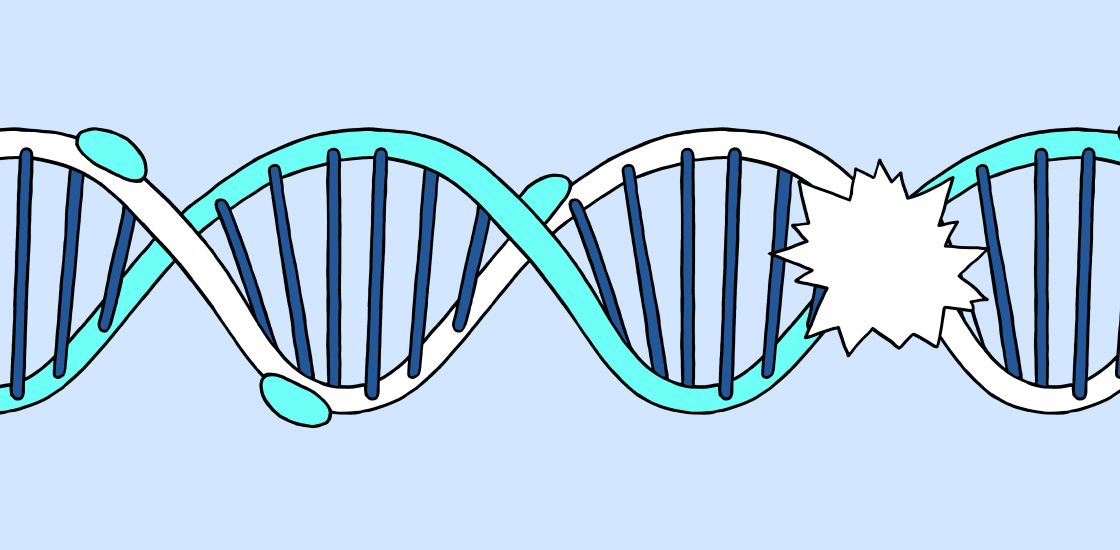The multiple hits theory of autism, explained
Researchers are studying how a combination of genetic ‘hits’ may contribute to autism’s diversity.

Over the past decade, researchers have looked for rare mutations found in people with autism but not in their neurotypical parents or siblings. This approach has yielded a list of roughly 100 ‘autism genes’ that harbor these powerful spontaneous mutations.
However, mutations in these genes are not guaranteed to cause autism. Even those who do have the condition vary significantly in the severity of their traits. Because these mutations are, by definition, not inherited, they also cannot explain why autism tends to run in families.
For these reasons, researchers are exploring the ‘multiple hits model,’ which posits that autism is often a result of combinations of mutations.
What types of mutations can lead to autism?
There are three main types: rare spontaneous, rare inherited and common variants. These three types may all be at play in a single person with autism.
Rare, spontaneous (or de novo) mutations that are present in a person with autism but not in their families are the best known contributors to the condition. These mutations may be small — affecting a single gene — or may disrupt multiple genes. Rare inherited mutations tend to be less disruptive than de novo mutations, but can still be harmful.
Common variants are those present in more than 5 percent of the population. Each common variant has a mild biological effect, but in combination, they can determine complex traits such as height.
Each person in the population has a unique set of common variants that affects her autism risk. But studies show that common variants working together could account for as much as half of autism’s genetic basis. Identifying the variants is difficult, however: Scientists know of only five with an autism link.
What is the evidence for the multiple hits hypothesis?
Autism’s diversity is the biggest argument in favor of this hypothesis: The same mutation can lead to a different set of traits in two people.
For example, de novo mutations do not have the same effect on all carriers. Only about 20 percent of people a mutation in 16p11.2 — among the strongest risk factors for autism — have the condition; all have some combination of other traits, such as developmental delay, obesity and language problems. Much of this variability depends on the rest of a person’s genetic background.
In a large study last year, researchers uncovered a critical role for common variants in people with severe developmental delay or autism. These people are also likely to carry rare or de novo harmful mutations, suggesting that the both types of mutations are involved in severe conditions.
Spontaneous and inherited mutations may also interact: People who have both a large spontaneous mutation linked to autism as well as a rare, inherited harmful mutation are more affected than those who carry only the former.
What does the theory tell us about autism?
The theory may help explain why the same rare mutation only sometimes leads to autism and in other cases, leads to epilepsy, schizophrenia or other conditions. The common variants a person has may determine whether a rare mutation leads to autism or to something else.
It may also explain why a de novo or rare autism mutation varies in its impact: Second hits may serve as buffers. To investigate this idea, researchers are sequencing the genomes of unaffected parents or siblings to identify protective variants.
One way a second hit could buffer — or enhance — the effect of a first hit is by altering gene expression. Most mutations associated with autism affect only one copy of a gene. If a second hit boosts expression of the functional copy, it may counteract the effect of the mutation.
Recommended reading

Developmental delay patterns differ with diagnosis; and more

Split gene therapy delivers promise in mice modeling Dravet syndrome

Changes in autism scores across childhood differ between girls and boys
Explore more from The Transmitter

‘Natural Neuroscience: Toward a Systems Neuroscience of Natural Behaviors,’ an excerpt

